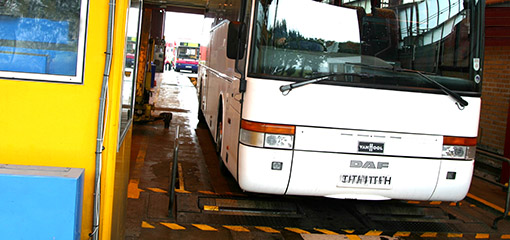
When it comes to testing vehicle exhaust systems, they are all very much the same... until you get to large buses and coaches.
All exhausts are tested for security, leaks, effectiveness of the silencers and to make sure that fumes do not enter the cab. However, when it comes to buses and coaches a few extra items need to be considered to avoid failing the test. These extra items are covered in section 46 of the bus and coach inspection manual.
Exhaust systems
The outlet should be positioned at the rear or on the offside of the vehicle. The exhaust should not be in a position where fumes are likely to enter the driver or passenger compartment, nor in a position that it is likely to cause a fire hazard.
Grease shields
Grease shields fitted at the time of approval should be in a good condition and correctly positioned. But where there is evidence of grease being thrown on to a hot part of the exhaust in areas not covered by shields fitted at the time of approval, additional shields must be fitted (not required on a minibus first used on or after 1 April 1988).
Exhaust and waste for other systems
Other equipment, such as toilets, cookers, heaters, or catering or entertainment systems and any other special features, will also be inspected. Any of these with exhaust or waste systems that show fouling or are likely to cause a fume hazard will result in a failure.
With a little bit of extra care you could avoid an unnecessary test failure.
Read more about exhaust and waste systems in section 46 of the PSV inspection manual.
Leave a comment